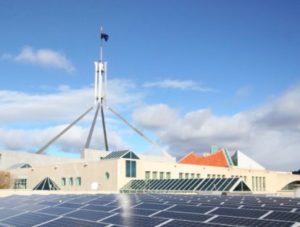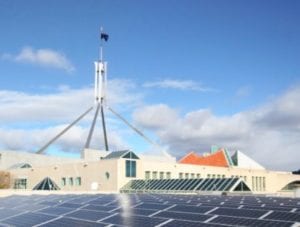The ACT government continues to lead the field in battery storage incentives in Australia, announcing on Wednesday morning that it will target around 600 Canberra homes and businesses in the second round of its battery storage tender.
The new funding round will make $2 million available, which ACT environment and energy minister Simon Corbell says should result in about 2MW of battery storage capacity. It is part of an overall program to fund around 36MW of battery storage, the largest supported program in Australia by quite a distance.
 The first round of the funding program, a $600,000 pilot round, saw three companies deploying battery storage technologies from Tesla, Panasonic and LG Chem, as well as smart control technology company Reposit Power – win a tender to deliver lower cost storage systems to 200 Canberra households.
The first round of the funding program, a $600,000 pilot round, saw three companies deploying battery storage technologies from Tesla, Panasonic and LG Chem, as well as smart control technology company Reposit Power – win a tender to deliver lower cost storage systems to 200 Canberra households.
“Following strong community and industry interest in the next generation renewables pilot program currently underway, I am pleased to be able to announce that the government intends to open another competitive funding round in early June worth $2 million, with proposals due in early July,” Corbell said in a statement.
The funding for the battery storage tenders comes directly from the state’s large-scale renewable energy projects, and particularly from the next round of large scale renewable energy tenders, which has been increased to more tun 200MW as the ACT brings forward its 100 per cent renewable energy target to 2020.
“This highlights the importance of combining renewable energy generation with storage technology,” Corbell said.
“Battery storage, following low-cost rooftop solar, is the next phase in a distributed energy revolution that will transform the nation’s electricity system into a consumer focussed, zero carbon energy grid,” Corbell said.
“Energy storage will provide solar energy in peak periods, especially winter evenings when Canberra families are home cooking dinner and heating up the house on cold nights.”
The call for proposals will open on June 8 and will run for 4 weeks, closing on July 6. Corbell said he expected Australian and international battery storage technology providers to team up with local contractors.
Companies interested in installing batteries under the Scheme and receiving the Request for Proposals (RFP) package should register with the Next Generation Secretariat at [email protected]
This article was originally published on RE sister site One Step Off The Grid. Click here to sign up for the weekly newsletter.










